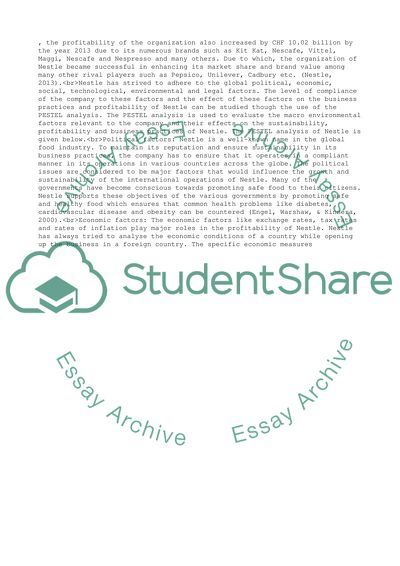Cite this document
(PESTLE ANALYSIS OF NESTLE Essay Example | Topics and Well Written Essays - 1750 words, n.d.)
PESTLE ANALYSIS OF NESTLE Essay Example | Topics and Well Written Essays - 1750 words. https://studentshare.org/management/1832489-pestle-analysis-of-nestle
PESTLE ANALYSIS OF NESTLE Essay Example | Topics and Well Written Essays - 1750 words. https://studentshare.org/management/1832489-pestle-analysis-of-nestle
(PESTLE ANALYSIS OF NESTLE Essay Example | Topics and Well Written Essays - 1750 Words)
PESTLE ANALYSIS OF NESTLE Essay Example | Topics and Well Written Essays - 1750 Words. https://studentshare.org/management/1832489-pestle-analysis-of-nestle.
PESTLE ANALYSIS OF NESTLE Essay Example | Topics and Well Written Essays - 1750 Words. https://studentshare.org/management/1832489-pestle-analysis-of-nestle.
“PESTLE ANALYSIS OF NESTLE Essay Example | Topics and Well Written Essays - 1750 Words”. https://studentshare.org/management/1832489-pestle-analysis-of-nestle.


